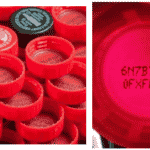
What do you call it when consumers duped into joining a paid rewards program get $225,000 in refunds and a modest discount off a future purchase, while the lawyers who litigated the case get $8.7 million?
Just another coupon settlement.
Except in this case, the lawyers arguing the case claimed the discount offered to consumers wasn’t a coupon at all – an important distinction that made their huge windfall possible. But in a new opinion, a federal appeals court has disagreed, questioning the value of the deal to consumers and setting aside the attorneys’ multi-million dollar payday.
The crux of the issue was whether the $20 discount offered to affected customers of ProFlowers.com and RedEnvelope.com was, in fact, a coupon.
The case was first filed back in 2009. A group of plaintiffs who visited the websites in question said they were presented with a pop-up ad for $15 off. “Clicking the pop-up directed Plaintiffs to a different website and instructed them to enter their contact information and click ‘Accept’,” the appeals court explained. “This process enrolled Plaintiffs in (a) membership rewards program… which proceeded to charge Plaintiffs a $1.95 activation fee and a recurring $14.95 monthly membership fee,” to which the plaintiffs never consented. Making matters worse, “Plaintiffs also never received the promised coupons, gift codes, or any other savings benefits.”
The two sides reached a settlement in 2012, in which a class action of 1.3 million consumers would be offered up to $3.5 million in refunds and a $20 credit toward a future online purchase. Those figures were used to calculate the value of the settlement, and the plaintiffs’ attorneys’ $8.7 million in fees.
Under the law, though, the value of any coupons offered in a settlement cannot be used to calculate attorneys’ fees – only the value of all coupons actually redeemed. So, presuming a good portion of the consumers victimized by the two websites would not be eager to use their credits to shop there again, the number of redemptions – and the resulting attorneys’ fees – would likely be far less.
But the lower court decided the $20 discount was not a coupon at all, but something akin to a gift card. The appeals court disagreed.
“The only logical conclusion under the correct legal rule is that these credits are coupons,” the appeals court ruled. “The credits still cannot be used in anywhere near the same way as cash.” Class members “are required to hand over more of their own money before they can take advantage of the coupon,” the court’s ruling continued, since “Defendants only claim to sell ‘15–25 products’ for under $20. And that meager list does not even account for shipping charges.”
Perhaps worst of all, anyone who wants to use their $20 credit “must hand over their billing information again to the very company that they believe mishandled that information in the first place,” the appeals court pointed out.
Since the settlement still has not been finalized, no one actually has been formally offered their $20 discount yet. But consumers have been given the chance to claim refunds – and so far, only 3,000 have done so, submitting claims totaling a mere $225,000.
So the plaintiffs’ attorneys won’t be able to count their millions just yet. It’s a frequent criticism of “coupon settlements”, that the affected consumers get a token amount – or even a useless amount, if it’s a discount they will never actually use – while the attorneys get a windfall.
In one such case about a decade ago, a California judge ruled that the attorney in a class-action consumer case should be paid the same way as the class members – in gift cards. Class members got a $10 gift card to Windsor Fashions, and their attorney got a total of 12,500 $10 gift cards instead of the $125,000 in cash he was expecting.
So if the attorneys in this case want to argue that $20 credits to ProFlowers.com and RedEnvelope.com aren’t coupons and are, in fact, as good as cash, then maybe they’d like to be paid with $20 credits. It will be up to a lower court to finalize the revised compensation figure, whatever it is – and then this nine-year-old case may finally come to an end. It will be up to class action members and their attorneys to decide whether it was worth the wait.
Image source: ProFlowers















